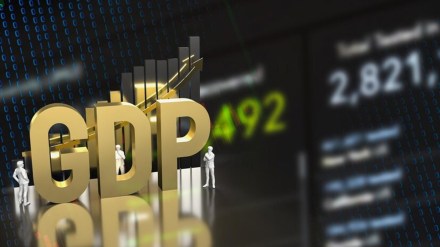The Indian economy is poised at an interesting juncture. While on the one hand, worries about inflation and growth slowdown, the raging tariff trade war is also creating a sense of uncertainty. UBS Securities says though India is not immune of Trump policies, it has the potential to be a $6 trillion economy in 5 years.
That said, the road to becoming a 6 trillion dollar economy is fraught with challenges. Tanvee Gupta Jain, Chief India Economist at UBS Securities lists out the top challenges for India at the moment –
India not immune to Trump’s tariff policies
India may not be the primary target for Trump but UBS’ Jain highlights that India may be at the receiving end of some collateral damage. “Our estimate assumes global growth slows from 3.2% in 2024 to 3%/2.7% in 2025/2026, and a 60% US tariff hike on imports from China from September 2025. Even though we believe India is among those less at risk from tariffs relative to Asia’s more open economies, it is not immune.”
Factoring in downside risks from an escalating trade war, UBS Securities sees “India’s FY26 real GDP growth to stabilise at 6.3% YoY but to remain below consensus (6.5%YoY) building in softer domestic growth” and seeing the negative drag from trade tariffs.
“We expect India’s real GDP growth to recover to 6.6% in FY27 on supportive policy measures and strengthening of ‘China + 1’ supply chain shifts to India,” added Jain.
Can Policy boost growth
The second key concern for India, as per UBS Securities, is the risks to macroeconomic stability. They believe that these risks may remain largely contained in FY26, with
1) headline inflation to decelerate towards 4-4.5% YoY
2)Aggregate fiscal deficit to narrow further to 7.4% of GDP
3) Current account deficit to remain contained (well below 2% of GDP)
Additionally Jain expects “the pace of the central government’s fiscal consolidation to slow down in FY26 (40bp) along with higher public capex push (12-14%YoY as per UBS estimates) Vs faster-than-expected consolidation in the past year.”
UBS Securities continue to expect a shallow monetary easing cycle (75bp) to commence from February policy. We also expect RBI to proactively manage domestic liquidity conditions.
Interestingly, the markets had just seen a massive liquidity boost recently and this current salvo is set to continue till mid-February.
Recovery on the cards in H2FY25?
If there is one worry that’s high on the list of both common people and experts is the showdown worry. When will the pace of GDP growth gain speed? Well, UBS believes that “India’s domestic growth slowdown in H1 FY25 was cyclical and partly policy- driven. In our base case, we continue to expect India’s real GDP growth to see a modest cyclical recovery towards 6.5% YoY in H2 FY25 (from 6%YoY in H1), on festive/marriage season demand, improved rural sentiment (on higher agriculture sector growth) and likely improvement in overall government spending. This would bring full-year growth to 6.3% YoY in FY25.”
Some of the key triggers for the slowdown in the first half include 2024 General Elections, heavy rainfall and regulatory delays, tight monetary policy and slowdown in credit growth that weighed on domestic economic activity over the past year.
Challenges on the way to be a $6 trillion economy by FY31
Does India have what it takes to be a 6 trillion dollar economy? Well UBS says yes, “we expect India to maintain potential real GDP growth of 6.5%YoY over FY26-28, making it the world’s third-largest consumer market in 2026 and third-largest economy by 2027 (after the US and China). We expect India’s nominal GDP to increase to $6 trillion-plus by FY31 from $3.8trillin in FY25.”
According to Jain, India’s potential growth could benefit from the “manufacturing and export push, increased services exports, and digitalisation, leading to improvement in productivity and efficiency gains. However, challenges remain, including the provision of productive jobs for the rising working-age population, a less friendly external environment and the automation overhang.”
UBS believes “global policy shifts could offer new opportunities and strengthen the case for ‘China + 1’ supply chain shifts to India in the medium-term.
